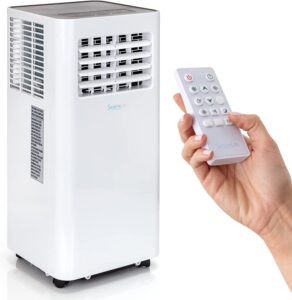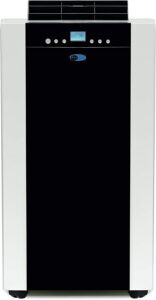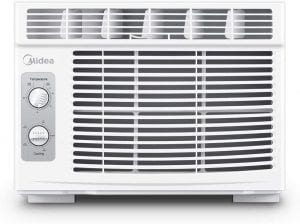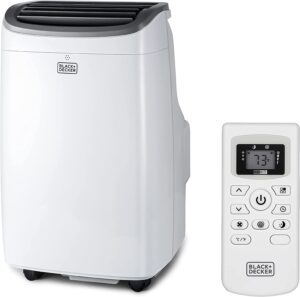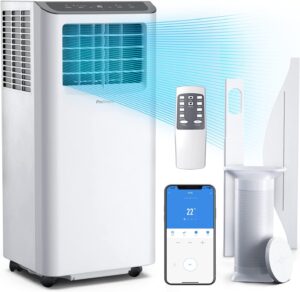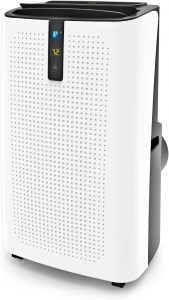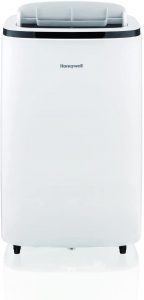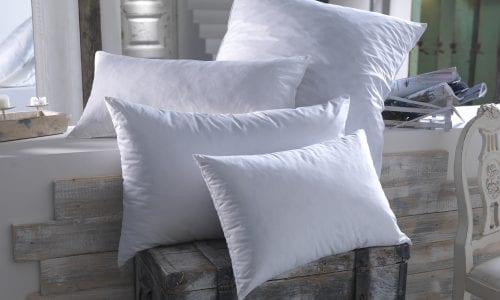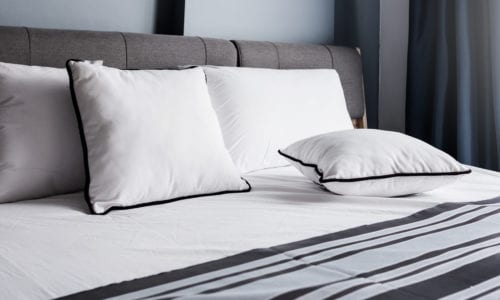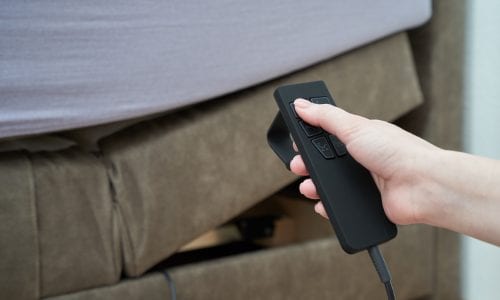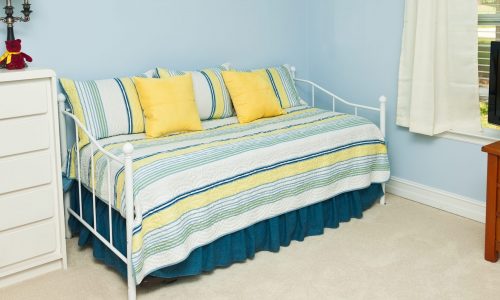The Best Bedroom Air Conditioner
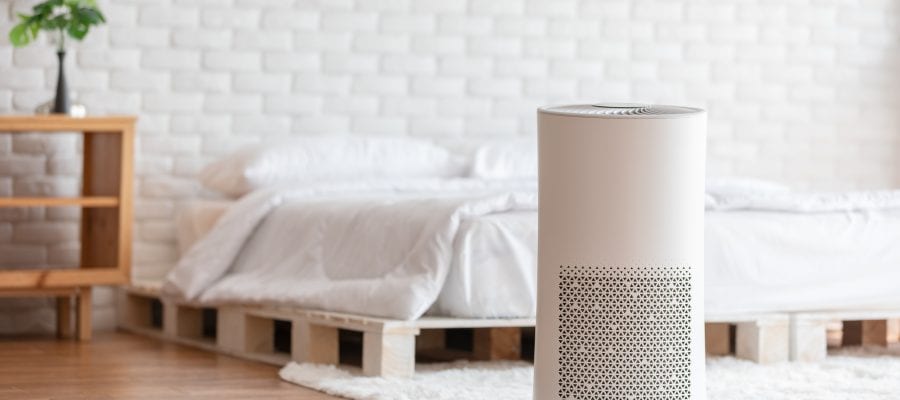
Our Review Process
Don't Waste Your Money is focused on helping you make the best purchasing decision. Our team of experts spends hundreds of hours analyzing, testing, and researching products so you don't have to. Learn more.
Our Picks For The Top Bedroom Air Conditioners
- 1. SereneLife LED Easy Install Bedroom Air Conditioner, 10,000-BTU
- 2. SereneLife Remote Control Low Noise Bedroom Air Conditioner, 12,000-BTU
- 3. Whynter Easy Install Extendable Hose Bedroom Air Conditioner, 14,000-BTU
- 4. MIDEA MAW05M1BWT 2-In-1 Circulating Bedroom Air Conditioner, 5,000-BTU
- 5. Black + Decker BPACT08WT Easy Install Bedroom Air Conditioner, 8,000-BTU
- 6. Pro Breeze Google Home Compatible Bedroom Air Conditioner, 10,000-BTU
- 7. JHS Battery Powered Bedroom Air Conditioner, 8,000-BTU
- 8. Honeywell HL12CESWK Digital LED Bedroom Air Conditioner, 14,000-BTU
When temperatures begin to rise, you won't want to be without this powerful bedroom air conditioner. The 10,000 BTU unit is a cinch to install and does much more than simply cool the air. It also circulates the air while acting as a dehumidifier. The handy remote is a nice bonus, as it allows you to operate the unit from across the room.
Handy Remote IncludedThis bedroom air conditioner is able to cool a room of up to 300 square feet.
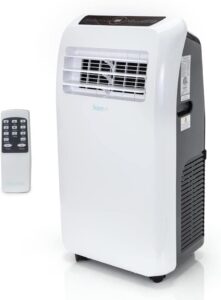
SereneLife
Remote Control Low Noise Bedroom Air Conditioner, 12,000-BTU
You won't even know this bedroom air conditioner is on, as it's designed to run quietly in the background. The unit comes with a remote that allows you to switch between a variety of modes, including cool, fan, dehumidifier and heat. Since the included filter is washable, you'll be able to reuse it again and again.
Easy to InstallThis bedroom air conditioner comes with a remote and is available in options ranging from 8,000 to 12,000 BTU.
What you'll love most about this bedroom air conditioner is its portability. Once you set it up, it's able to quickly cool any space of up to 500 square feet. There's also the option to use the machine as a fan or dehumidifier when needed.
Most VersatileThis bedroom air conditioner comes with a handy bag for winter storage.
This bedroom air conditioner offers 7 temperature settings and can cool up to 150 square feet without breaking a sweat, thanks to 5,000 BTU. The unit can be easily installed into any standard window.
Stay Cool Your WayUse this air conditioner when you want the simplicity of a window unit for a small space.
Buying Guide
Air conditioning is a comfortable convenience that can be a necessity for people with temperature sensibility, breathing issues, or chronic pain. Although most homes now offer full-house air conditioning run on a central HVAC unit, older homes might not; alternately, homeowners may want to cool a single room at night rather than an entire house, to save money on the utility bills.
Most people sleep better during hot evenings if a room is not just cool, but low humidity as well, so many single-room air conditioning units also include a dehumidifier option. Since most of these units are portable, they can also be used to keep an office or study manageable during the daytime, then moved into a bedroom at night.
The first thing to consider when looking at bedroom or single-room air conditioners is the size of the space to be cooled; larger spaces will need a unit with more capacity, which usually means more expensive. Also consider whether the room suits a standard window mount or one of the new upstanding units, many of which come with wheels for even easier relocation.
Many units offer a combination dehumidifier and regular fan, so consider whether these options are helpful or unnecessary. Since so many things in life now are digital, also consider whether or not the added convenience of remote controls, voice activation or smartphone integration are amenities that will add value.
What to Look For
- Window units automatically drain any gathered condensation outside into the yard. With standalone units, you’ll want to check whether they have a reservoir that needs to be emptied at certain intervals, or a drainage hose that will require an out-the-window connection.
- Larger rooms will require bigger BTUs, but watch the noise level — larger units can make more noise. If quiet is necessary, there are high-efficiency models available.
- Size isn’t everything; if a room has big windows that take in sun, or is near a kitchen, for example, that room may also require a unit with higher BTUs to keep up with the higher heat load.
- For homeowners with allergies, check the filters on a single-room unit; many offer filters that will reduce the amount of dust and allergens in the room while cooling, or during use as a fan.
- Units with remote controls can be switched on/off and changed from across the room; units with smartphone capabilities can be controlled from outside the house.
More to Explore
Air conditioning actually wasn’t invented for comfort — it was invented for business and preservation. Willis Carrier, who worked with a publishing company, invented the air conditioner to keep the temperature and humidity stable in their factories. The company was having issues with running ink, as well as paper expanding and contracting in the changing humidity and heat.
Prior to Carrier’s invention, rooms were cooled using big blocks of ice; the first air conditioning units to be used were measured according to how many blocks of ice would be required to cool the room comparatively.

